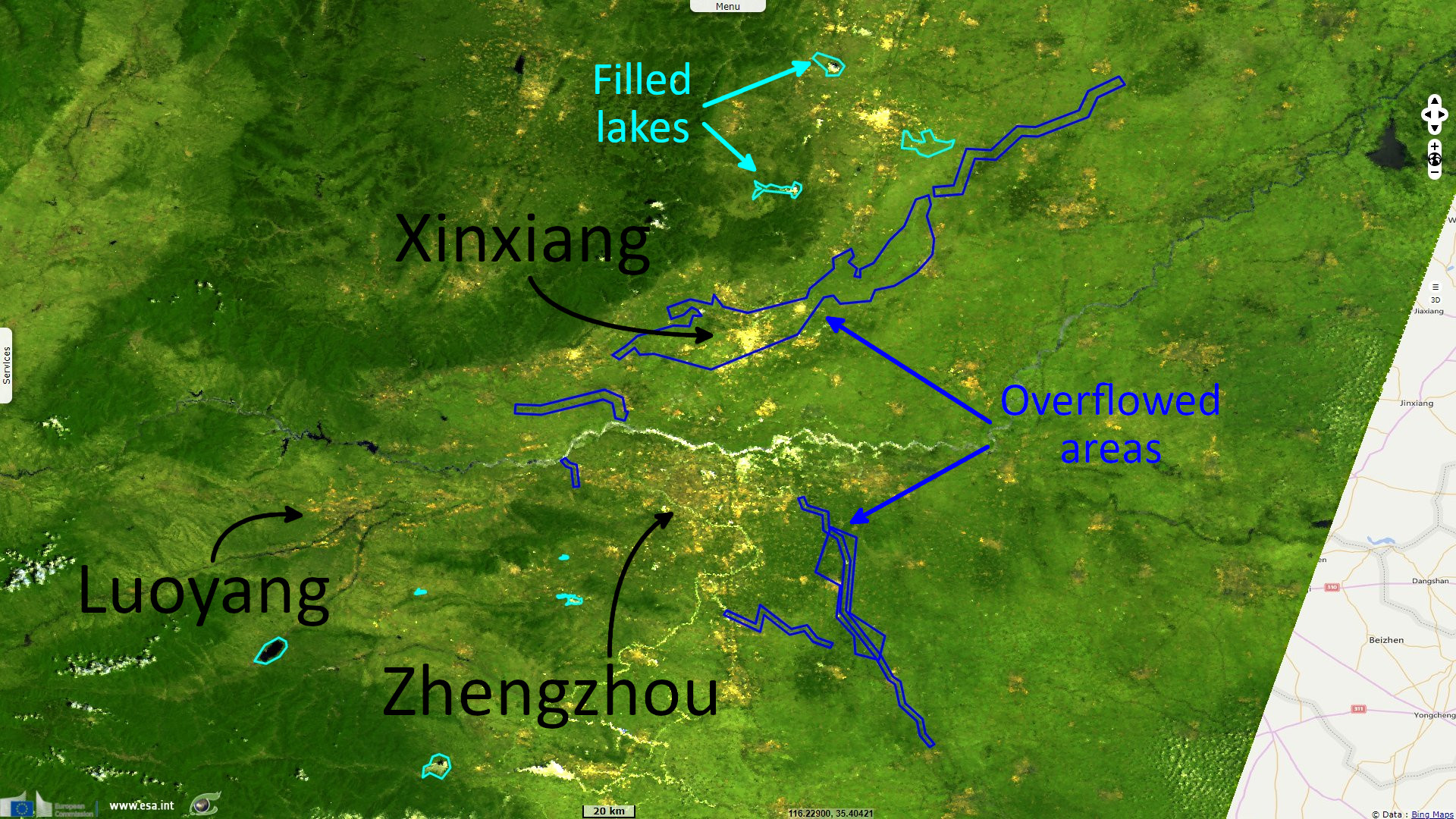Incredible rainfalls affect Henan province, China
Sentinel-3 OLCI FR & SLSTR RBT acquired on 08 July 2021 at 02:24:58 UTC
Sentinel-3 SLSTR RBT acquired on 09 July 2021 at 03:00:23 UTC
...
Sentinel-3 SLSTR RBT acquired on 20 July 2021 from 02:13:44 to 03:15:20 UTC
Sentinel-3 OLCI FR, SLSTR RBT & Sentinel-2 MSI acquired on 26 July 2021 from 01:17:37 to 03:05:51 UTC
Sentinel-3 SLSTR RBT acquired on 09 July 2021 at 03:00:23 UTC
...
Sentinel-3 SLSTR RBT acquired on 20 July 2021 from 02:13:44 to 03:15:20 UTC
Sentinel-3 OLCI FR, SLSTR RBT & Sentinel-2 MSI acquired on 26 July 2021 from 01:17:37 to 03:05:51 UTC
Keyword(s): Emergency, flooding, river, hydrology, seasons, climate change, precipitations, China
Henan, China's third most populous province with nearly 100 million inhabitants, has suffered heavy rainfall in recent days, turning streets into torrents of mud. As of 2 August 2021, at least 302 people have died, at least 50 more went missing, 815 000 people were evacuated, 1.1 million were relocated, and 9.3 million people were affected.
Zhengzhou has been particularly hard hit. Twelve people lost their lives in the city's underground, which was engulfed by the floods. The inhabitants of several villages in the Xinxiang agglomeration in China were evacuated on a movable pontoon boat after being completely flooded.
During China’s rainy season, floods are a frequent occurrence, causing annual destruction and washing away highways, crops, and homes. However, the threat has grown over time, partially due to the extensive construction of dams and levees that have cut connections between rivers and lakes and altered floodplains that had helped absorb the surge. During the disaster, 13 reservoirs in Henan Province have reached the flood control limit. The disaster caused more than 65.5 billion yuan (8.5 billion euros) of damage.
Climate change is being blamed for the worst precipitations in the region since records began 60 years ago.
The long term average annual rainfall in Zhengzhou is 640.8 mm. These are the stats for the recorded rainfall:
- Max. 24 hour rainfall: 552.5 mm (from 20:00 on 19 July to 20:00 20 July);
- Max. 72 hour rainfall: 617.1 mm (from 20:00 on 17 July to 20:00 20 July);
- Max one hour rainfall: 201.9 mm (from 16:00 to 17:00 on 20 July).
Dave Petley, Pro-Vice-Chancellor at the University of Sheffield, commented the amount of precipitations: "As such, statistically, this rainfall in Henan was one in one thousand year event. The highest one hour rainfall ever recorded is (I believe) 214.8mm in Penghu, Taiwan, but this was associated with a typhoon. To have >200 mm without the local presence of a tropical cyclone is very surprising."
"The all time record 24 hour rainfall in China before that was 168.3 mm, recorded at Maoming in Guangdong on 2 July 2002. Clearly the Henan event has soundly exceeded that value. It is worth noting that this rainfall event extended over a wide area, whereas many large 24 hour totals are highly concentrated. This may well also be the highest rainfall intensity ever recorded within a major city."
"After lashing Japan, the Philippines, and Taiwan, Typhoon In-fa reached eastern China’s coast on July 25 with sustained winds equivalent to a category-1 hurricane."











